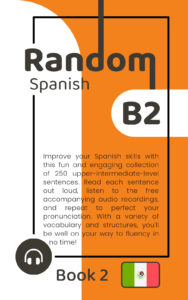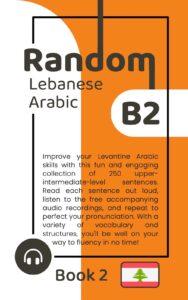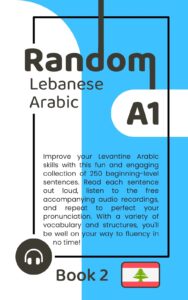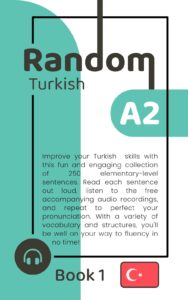Table of Contents
Hello, fellow Arabic learners! It’s been about three years since I first decided to study the Jordanian dialect. Of course, some people relish a challenge, but I prefer to take the most painless route possible. With that in mind, here are some tips for those of you who are just undertaking this journey or for those who might need to make some minor tweaks in your routine to push past plateaus.
Learning the Basics of Arabic
Learn the basics on your own. This means knowing the letters and being able to pronounce and write them [decently], as well as some foundational vocabulary and phrases. A few consonants in Arabic don’t exist in English, and these are given a lot of attention. But the unassuming aleph can also be tricky. For example, the ‘a’ in ‘salt’ sound differs from the vowel sound in ‘sat .’This difference can impact how people interpret the letter preceding it, as is the case with the consonants ‘Sau’ and ‘seen.’ Practice, practice, practice!
Arabic Language Tutors
If possible, I recommend having a teacher (tutor), language exchange partners (people who are learning a language from you and whom you are learning a language from), and practice partners (people who are learning Arabic along with you). A tutor will save you an immense amount of time in the long run because you only focus on learning with no expectation to teach.
Arabic Language Partners
If having a tutor is not an option, you can still go just as far with good language exchange and practice partners.
You’ll need at least one male language partner and one female language partner, and ideally, a few folks available at the same time so that you get accustomed to the requisite changes to address them in speech. While it is relatively easy to come across individual language partners, I suggest joining group chats or video conferences to create a setting where you can speak to several people at once if you aren’t acquainted with native speakers in your area. Be able to briefly introduce yourself and ask a few questions, which will function as icebreakers and set the tone to prompt further dialogue. Your initial conversations will serve as a gauge of your language levels and thus the effort required by both parties to help each other.
Bear in mind that the primary goal of having tutors and partners is gaining competency in your target language. I hit it off with a Jordanian woman two years ago. We spent many hours conversing (mostly in English) about our lives. After a couple of months, I began noticing that she was not correcting my errors. If I asked one question about Arabic, she would follow up with three questions about English. When I initiated a conversation in Arabic, she often would respond in American slang. As you can imagine, her fluency in my native language had markedly improved, but my Arabic proficiency remained stagnant. Yet I continued to devote a lot of time talking with her because I considered her a friend. Avoid language leeching—make an earnest effort to teach your partner, and expect the same in return. Friendships will naturally arise from these relationships, which are not mutually exclusive.
Practicing with a Partner
I was reluctant to seek out others who were beginning to learn the Jordanian dialect until recently. I only wanted to learn from and listen to native speakers because I was afraid that the mistakes in pronunciation and grammar that all newbies make would rub off. I would have to do double the work to unlearn them. Now that I am at a higher level, albeit still probably at A2 or B1, I can tell when my practice partner stresses the wrong vowel sounds. She knows when I use the wrong pronoun endings, but we don’t seem to internalize each other’s errors. Instead, our focus lies in comprehension and speaking extemporaneously. In between the stutters, long pauses, and bursts of laughter that result when we don’t have any idea how to say what’s on our minds using Arabic, we inquire about the meanings of words the other has used that we don’t know. I make sure to confirm their definition, spelling, pronunciation, and context with native speakers. Things really kicked into high gear when we decided to watch one episode a week of a Jordanian tv series. Similar to classroom learning, where all the students have around the same level of knowledge, are exposed to the same material, and thus learning the same new vocabulary at the same time, we were both able to gain and practice new words at a much faster rate by discussing the scenes. With this in mind, share and compare the resources that you utilize with those of your practice partner so that you can both draw from a few of the same wells of information. Having a practice partner has been more beneficial than I imagined, and I definitely recommend it after you are able to recognize and correct some of your own mistakes.
Don’t Ignore Roots
Let the root system work for you. For it to truly be effective, learn a small group of words, say four or five, with the same root at the same time so that you can better understand how they are related. I prefer to include a few nouns and an adjective or verb. Some associations are very apparent, while others may be more difficult to discern. Figuring out the connections between words with the same root can make the learning process much more interesting. You will be surprised at how much easier it is to recall the definitions of these words later down the road.
Learn Arabic Verbs in Groups
Along the same lines, learn a few verbs that have the same verb form together. This makes conjugation much easier because if you know the pattern of one verb, the others will all follow suit. In addition, learning phrases and complete sentences (chunking, as it is commonly called) seems to be more efficient than relying on memorization of isolated words, especially to establish the proper context for usage. This may be a little overwhelming if you are just starting out. Still, you will naturally build up your capacity to process larger sentences as time goes on.
Memorizing Arabic Vocabulary
Discovering new words to learn is never really a problem. The real frustration lies in retention. That moment when you recognize a word or phrase that you spent an entire week memorizing but are now unable to recall—nothing feels more defeating! It’s bound to happen, but you can lessen these occurrences by utilizing the spaced repetition method. Several language learning apps such as Anki employ this technique which tracks how long it’s been since you’ve reviewed a set of material and presents the words or phrases you have had the most difficulty remembering more frequently. You can also use a watered-down DIY version with the calendar app or even an old-school one hanging on the wall. Take a few minutes to plan out certain topics you want to discuss at regular intervals with your partners, allowing your targeted vocabulary set to be part of the natural course of conversation.
Listening Practice
Apart from chatting with native speakers, I relied solely on instructional videos from a handful of Jordanian content creators for upwards of six months. At first, this suited my purposes just fine, and I was pretty satisfied with what I had managed to learn. Halfway through, though, I realized that this soup du jour approach wasn’t providing me with the relevant terms and idioms needed to express myself or understand others in everyday conversations. If I had had access to verb books, dictionaries, and the like, I could have put together some coherent sentences to empathize with my Palestinian friend when he encountered a traffic jam on his drive back from the zoo. Instead, he passed his seven-year-old son the phone because I had watched a video to learn the names of animals a few days before. I was all too happy to have an entire conversation about them with anyone willing to endure it. Do yourself a favor and research the materials that are out there in your chosen dialect. Read reviews, and invest in resources that best fit your needs. Continue to expose yourself to a progressively expanding variety of subjects to gain the breadth needed to increase fluency. Aim to watch, listen, and read material at or a little above your current language level so you can enjoy it without becoming disengaged by the number of words you don’t know. How do you know if something is too advanced? I think it depends on your stage of learning. At first, you will need translation for every word. As time goes by, being able to follow along and understand what is being discussed in a general sense with some gaps here. There is sufficient and will prompt you to learn the meanings of words you haven’t encountered before.
Does Phonemic Transcription Help?
Speaking of resources, there is somewhat of a debate among learners of Arabic dialects, particularly about the usefulness of books written using transliteration versus the abjad. In my opinion, they both have a place, but for differing stages and aspects of fluency. When I began learning the sounds of letters and harakat, I found it absolutely necessary to use English. The source material I read was written in Arabic. Still, I penciled in my own Romanized transcription beside it until I could associate the sounds with the words. As time went on, I was writing and reading exclusively with the abjad. When I encountered a word I had never heard before, I could spell it with a high degree of accuracy and look up its definition since Arabic is a phonetic language. Fast forward to now, where I just got my hands on a spoken Arabic course written using English transliteration with Arabic audio. Because I have already mastered the pronunciation of Arabic letters, books written with English transcription force me to utilize this skill even more because I don’t have the word written out for me. When used in conjunction with audio, it definitively clarifies the sometimes-ambiguous vowel stresses that result from an individual’s unique speech patterns and intonations and the instances when the sounds of letters in a preceding word are rolled into the beginning of another. When I am using social media and reading comments from Arab speakers written in Arabizi, I know what is being said and recognize how it would appear if it were written using the abjad. So here’s my take on this issue. Arabic fluency, in its entirety, has several facets. You will need to speak and write (yes, write!) in a dialect to communicate naturally with native speakers. You will need to be able to at least recognize Arabic when it is written in a Romanized form if you are someone who plans on regularly communicating via social media because many Arabs do type in English. In my experience, transcription alongside Arabic (not in place of) is ideal for absolute beginners, but only for the relatively very brief time needed to learn the abjad. Progress to Arabic-only audio and written words as soon as you have mastered this stage to truly become proficient in the language. Afterward, transcribed materials can be beneficial because your brain will become automatically trained to associate the sounds, letters, and symbols used with their corresponding Arabic letters.
Going Old-School
Lastly, don’t write off old-school methods like using sticky notes or drawing pictures with the names of objects in Arabic for custom vocabulary cards. Whenever I write words with my own hands, they really seem to get engrained much quicker and stay there longer than when I use electronic methods alone.
Thanks for reading. I hope these tips will give you a good start (or restart) learning Arabic!








